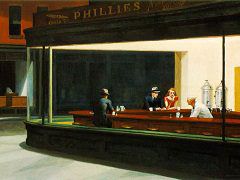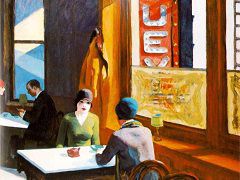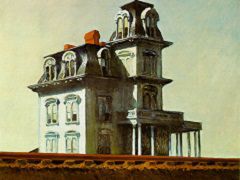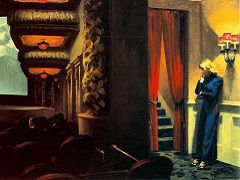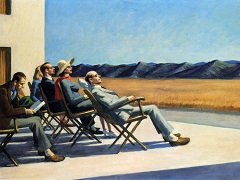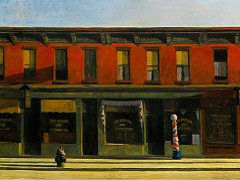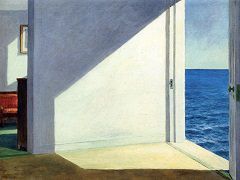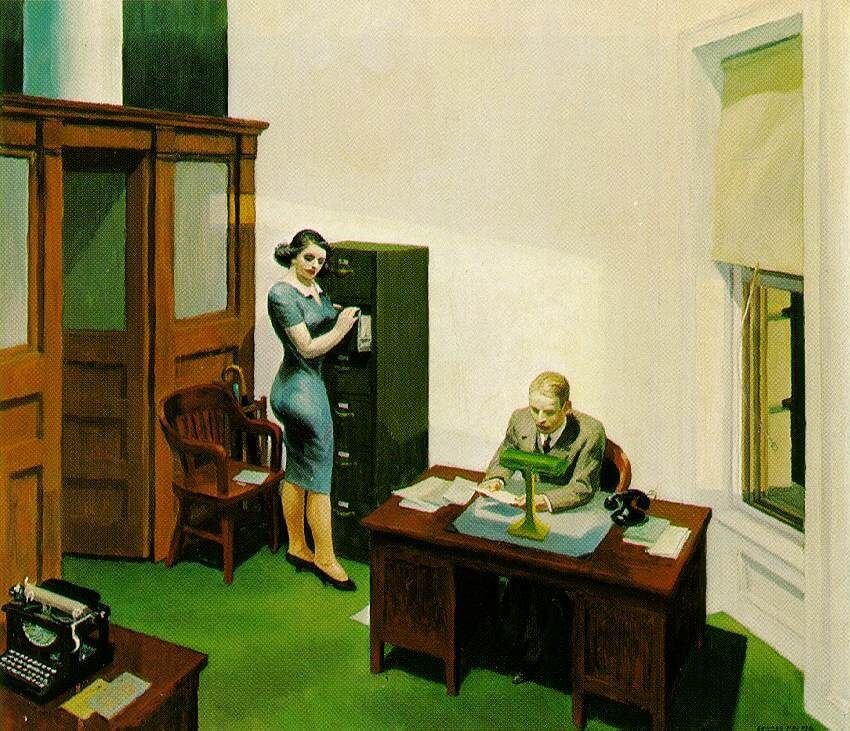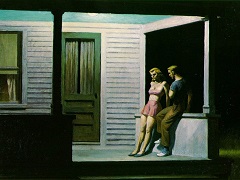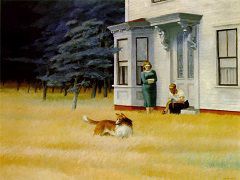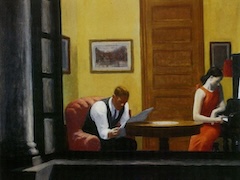Two Comedians, 1965 by Edward Hopper
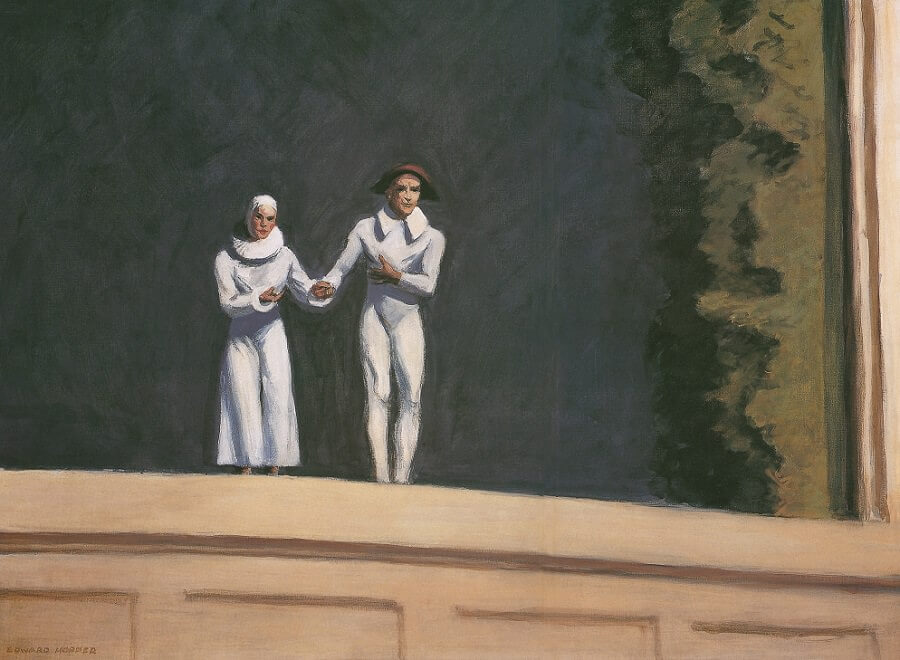
At age eighty-three Hopper painted Two Comedians, which he intended as a personal statement, a farewell of sorts. As Jo later confirmed, the painting represented the two of them gracefully bowing out. Both were in their eighties and had been ill; Hopper would die less than two years later and Jo the following year. In contrast to his repeated depictions of noncommunicative couples, as in Room in New York and Cape Cod Evening, here the tall male comedian, representing Hopper, takes the hand of the diminutive comedian, representing Jo. They are like the young lovers Pierrot and Pierrette from the commedia dell'arte. In death, it appears, Hopper preferred company, wanting Jo by his side. She described Two Comedians as "a dark stage (and what a stage, strong as the deck of a ship) and two small figures out of a pantomime." By his choice of theme, Hopper suggested his acceptance of life's ironies - his realization of the folly of human existence.
Hopper once remarked of artists in general: "Ninety percent of them are forgotten ten minutes after they're dead." His cynicism certainly did not accurately predict his own enduring and growing reputation. Yet he also knew what was memorable: "The only quality that endures in art is a personal vision of the world. Methods are transient: personality is enduring." Hopper's ceuvre demonstrates the uniqueness of his vision, making his images as relevant today as the day he created them. His art speaks not to one country or to one time but to all who grapple with the trials of civilization as they occur in daily life.

